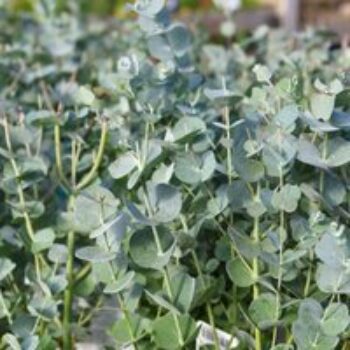- President Biden’s executive order in 2022 directed the U.S. Forest Service to conduct an inventory of mature and old-growth forests on federal lands for “conservation purposes,” but it did nothing to move the needle on old forest protections.
- The national old-growth amendment (NOGA) failed for a variety of reasons, and as a new, anti-conservation administration looms in Washington, not a single acre of old forests was protected by it.
- “I have experienced two Reagan terms, three Bush terms, and a Trump term where conservation groups united in throwing sand in the gears of bad forest policies. And I have lived through two Obama terms and a Biden term where conservation groups could not agree on a unified strategy that has now contributed to the deja vu of having to defend forests all over again, with nothing gained. We must all now unite, put aside our differences, and get ready for the fight of our lives,” an old growth forest expert and conservationist argues in a new op-ed.
- This article is a commentary. The views expressed are those of the author, not necessarily Mongabay.
Wikipedia defines a ‘nothing-burger’ as “a situation that receives a lot of attention but which, upon closer examination, reveals to be of little to no real significance.” That unfortunately applies to the Forest Service’s national old-growth amendment (NOGA), which despite President Biden’s executive order directing the agency to conduct an inventory of mature and old-growth forests (hereafter called “old”) on federal lands for “conservation purposes,” did nothing to move the needle on old forest protections.
While the president was a signatory to the Glasgow Leaders’ Declaration to end deforestation and forest degradation globally by 2030, and was committed to the Paris Climate Agreement, including maintaining “carbon sinks and reservoirs,” the Biden Administration is now ending without a single forested acre protected by NOGA, and the related Northwest Forest Plan amendment, with severe forest degradation consequences.
All sides are to blame for a failed NOGA policy that was the result of: (1) definition paralysis that delayed action; (2) rebranding strategies by the timber industry that positioned logging as the solution to all “forest health” issues rather than the problem itself; (3) questionable agency threat assessments that supported the industry narrative; and (4) the lack of a unified vision for forest protection by conservation groups. Let me break the failure to act down, piece by piece.

Paralysis over old growth forest definition
The NOGA process initially got bogged down in a so-called wicked problem, considered by some in the Forest Service as too complex to define and solve. Definition paralysis, especially how to distinguish old growth from mature, and rebranding of active management (see more on that below) contributed to a weak NOGA policy for old growth, and the exclusion of mature forest protections.
For over a century, however, foresters have used precise methods to determine when trees are mature enough (as growth rates slow down) to maximize their return-on-investment by cutting them down in time. So, if they can do it for profit, why not for protection? However, the agency likely freaked out when it realized that despite definition delays, its old forest inventory wound up identifying 45% of national forests in mature condition and another 18% as old growth. That is, nearly two-thirds of their forest base would face the prospects of management for “conservation purposes.”
As covered by Mongabay, before the agency conducted its own inventory, my team of scientists was already independently obtaining LiDAR (light detection and ranging) data from the GEDI instrument array on board the space station and other data on forest conditions. LiDAR was used to create three-dimensional images of tree height, canopy density, and forest biomass that we used to define and map old forests compared to their younger and less structurally complex counterparts. We and others since have had no trouble mapping forests structurally as either young, mature, or old growth.
To localize this issue of definition importance, I was asked by the Yaak Valley Forest Council to visit the Black Ram project area in NW Montana, which the council was proposing as an old- growth climate refuge. The Forest Service disagreed and was going to cut it down. However, in the field, I spied classic old growth features, including towering trees, dense and layered forest canopies, and large, dead standing trees (snags) and downed logs. After a lawsuit was filed by the council, a judge agreed with the plaintiffs and the timber sale was temporarily halted for completion of an environmental impact statement (EIS).
Thus, whether from space, on the ground, or for profit, we have known for sometime how to classify these forests. However, while the Forest Service was doing its old forest mapping, they were also irresponsibly advancing at least a dozen timber sales on endangered old growth sites.

What role did timber industry rebranding play?
The timber industry claims that it ‘isn’t in the business of harvesting old-growth trees’ anymore, and is instead going to save forests by ‘active management’ from burning up, getting eaten by insects, or falling apart from natural causes.
While rates of old forest logging have certainly plummeted on federal lands in recent decades due to previous overcutting of old trees, endangered species protections and other factors, federal agencies continue to put up old-growth timber sales rebranded with terms like fuels reduction, restoration, forest health, and forest resilience. So, if the industry is not cutting old growth anymore, then why are the agencies still putting up the sales? The answer in part lies in the art of rebranding.
Notably, I have testified at numerous congressional forest health hearings where the timber industry and congressional allies used the rebranding argument on everything from preventing forest fires to saving spotted owl habitat from burning, though I knew those issues well, having served on the US Fish & Wildlife Service’s spotted owl recovery team. As a reminder, the very reason the owl was listed under the Endangered Species Act (ESA) was because of logging in old forest habitat. A similarly specious argument to save forests from burning up is being played out not only in the NOGA process but in every dry forest region of the country, as logging is rebranded as community fire protection, even as fires race across logged landscapes.
Role of agency threat assessment
In the Forest Service’s introductory report on forest threats, the agency proclaimed fires and insects as the top “threats” to old forests and logging as only a “minor” (incidental) threat. They stacked all natural disturbances on the same graph alongside logging showing much greater “forest losses” from natural processes in comparison to logging – an apples to oranges comparison.
While on an acre-for-acre basis logging has resulted in fewer old forest acres lost, the impacts to ecosystems from logging are far greater than acres alone, accumulate over space and time, and continue to reverberate for decades. The emissions from logging, for instance, eclipse that of all natural disturbances combined and are amplifying the effects of climate change (cumulative effects). Putting natural disturbances on the same graph as logging hides the ball on the true threat to forests.
The author discusses the carbon storage potential of old growth forests:
To add insult to injury, the Forest Service “threat analysis” shows how the agency intends to continue logging old forests even as it claims to be restoring them. Most of the logging would be in younger and mature forests, and a lesser, but still significant amount, would come from old growth. In other words, the agency is ramping up logging as climate change accelerates and the policy baton is handed off to Trump II, which no doubt will want to be even more aggressive as it presumably follows the Project 2025 agenda.
Throughout my four-decade career I have been employed by both big national and small grassroots organizations working tirelessly to protect the forests that they love, which thankfully has resulted in some of the nation’s greatest conservation accomplishments (like roadless areas).
I have also learned that a unified vision that reserves the right to compromise only as a last-ditch effort is the best way to trade risk for big rewards (like the roadless policy).
What role did the environmental community play?
However, prior to NOGA, a compromising split already was taking shape early on within the environmental community’s approach over what age of trees should be protected from logging based on whether fire was frequent or not. Old forest protections were proposed mainly within infrequent-fire forests (e.g., coastal areas) with some old tree logging proposed in frequent-fire forests even though this questionable dichotomous scheme would result in extensive collateral ecosystem and climate related damages to millions of acres of dry forests. Their approach was later revised to embrace no-commercial exchange of large trees but it came far too late and conservation groups remain undivided on this issue going forward.
That split threw dry forests under the ‘active management’ bus. The appearance of a willingness to compromise instead of asking boldly for exactly what forests need in a changing climate – proforestation that allows forests’ slow development into old growth over time – likely doomed any chance of a big win on forests.

What can be done to move forward?
It is doubtful that NOGA, even with all of its blemishes, will see the light of day from the incoming Trump Administration. Had the Forest Service acted sooner with a clear conservation conscience, rather than suffering definition delays and ‘old forest inventory freak out,’ and conservation groups presented a united front from the get-go, it would have been harder to overturn a big forest win. Just like the Clinton roadless legacy, we would have rigorously defended it for decades as the nation’s best natural climate solution.
And while we need wood supply, only a tiny fraction (~4%) comes from the national forests, and none of it needs to come from old forests, if prudent investments are made to retool industry to accept small logs for value-added manufacturing. The Siuslaw National Forest in Oregon was an early adopter of the Northwest Forest Plan’s emphasis on previously cut but reforested second growth, and the Tongass National Forest in Alaska, with the nation’s most carbon dense old forests, has been transitioning into second growth on a much smaller logging footprint since 2016 (derailed by Trump part 1 and restored by Biden).
Sound forest-climate policy would have protected all old forests nationwide – frequent and infrequent fire systems alike – while applying appropriate prescribed fire and cultural burning practices as needed. This would allow old forests to function as fire and climate refugia, whether they succumb to fire or insects eventually. Agency ‘active management’ would be redirected to flammable tree plantations, road closures, and road obliterations to reduce human-caused ignitions and begin healing heavily damaged watersheds. Redefining the wildlife problem as responsible home ownership, as some scientists are now doing, is a more prudent investment in risk reduction, by working from the home and outward, instead of agency treatments that are often located more than a kilometer from the nearest structures.
As a conservation scientist/advocate, I have experienced two Reagan terms, three Bush terms, and a Trump term where conservation groups united in throwing sand in the gears of bad forest policies. And I have lived through two Obama terms and a Biden term, where conservation groups could not agree on a unified strategy that has now contributed to the deja vu of having to defend forests all over again, with nothing gained. We must all now unite, put aside our differences, and get ready for the fight of our lives.
At the same time, independent forest assessments need to be included in ongoing federal inventories to monitor changes in old forests overtime. This also means further establishing the scientific means for finally ending the commercial logging of old forests on federal lands as the only disturbance to forests that we can realistically do something about.
Dr. Dominick A. DellaSala is Chief Scientist for Wild Heritage, a project of Earth Island Institute, and is author of over 300 peer-reviewed articles and nine award-winning and co-authored books.
Banner image: Ancient trees on the shore of Salmon Lake in the Tongass National Forest. Image courtesy of Dang Ngo/Greenpeace.
Related audio from Mongabay’s podcast: Discussion of a new funding mechanism that could protect massive amounts of tropical forests, listen here:
See related coverage:
Rainforest Outlook 2025: Storylines to watch as the year unfolds
Old-growth forests of Pacific Northwest could be key to climate action








